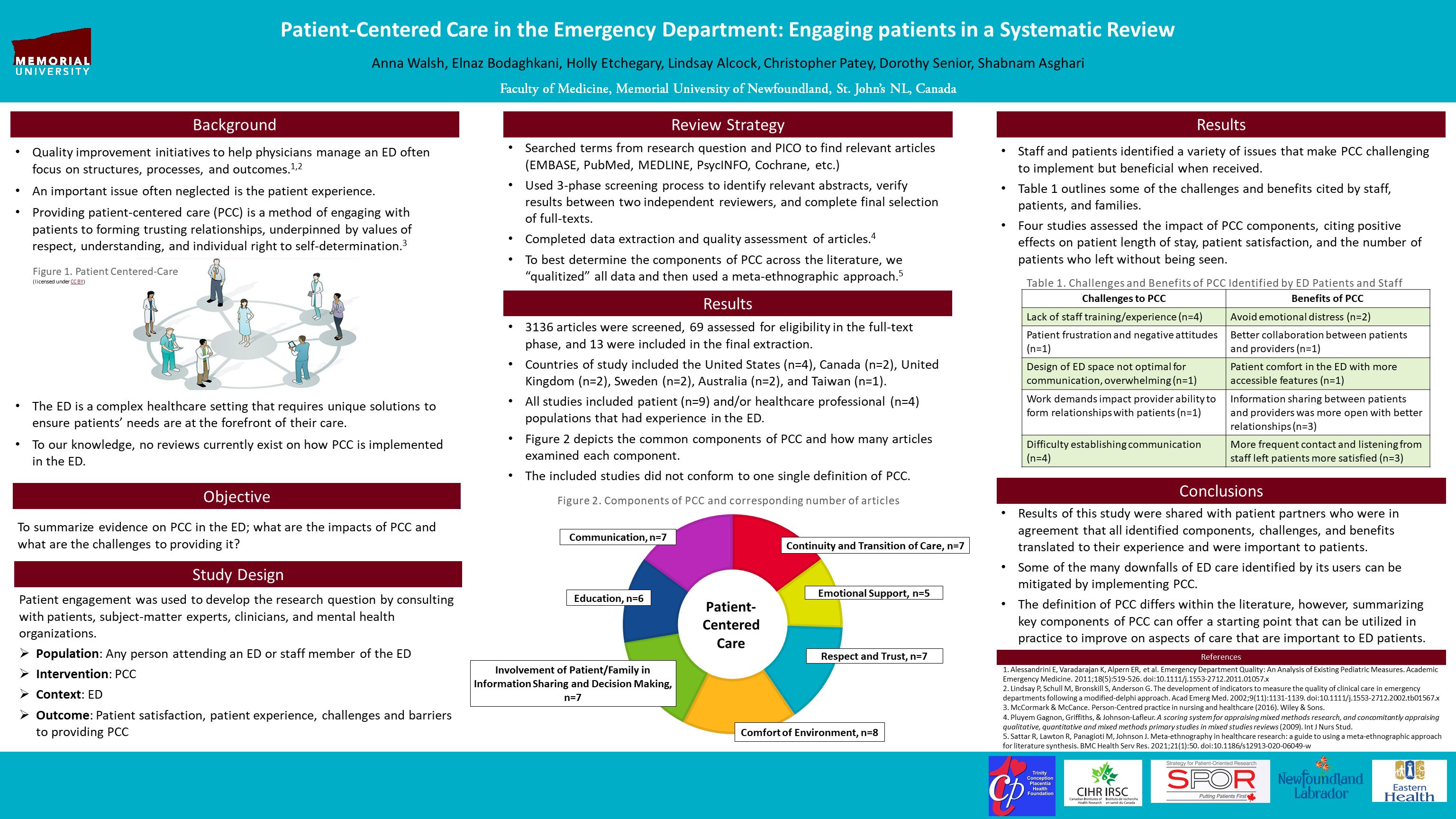PCR045: Patient-Centered Care in the Emergency Department: Engaging Patients in a Systematic Review
Anna Walsh, BSc, MSc; Elnaz Bodaghkhani, MSc; Shabnam Asghari, MD, PhD, MPH; Holly Etchegary, PhD; Lindsay Alcock; Christopher Patey, MD, BSc, CCFP; Dorothy Senior
Abstract
Context: Patient-centered care (PCC) is an emerging priority in many healthcare settings such as primary care. Though there is a shifting focus toward PCC, its standards are unclear in the emergency department (ED) which is the first point of contact for many patients without family physicians. It is of interest to know what PCC practices are most important to patients to better their experience and how to implement those in an ED setting. Objective: To conduct a review on PCC in the ED; what are the impacts of PCC, and what are the challenges and benefits of providing PCC? Study Design: Mixed-methods systematic review with meta-ethnographic analysis. To develop the study question we used stakeholder and patient engagement to consult with clinicians, subject-matter experts, patient partners and mental health organizations to determine patient needs. Dataset: Electronic databases including PubMed, PsycInfo, MEDLINE, etc., guided by a librarian. Texts were sorted in Covidence. We considered all literature from peer-reviewed journals and PhD theses in all languages. Population Studied: Any article from an ED context, concerned with all patients who visit the ED. No restrictions on race, gender, health status, age, or other. Intervention: PCC, an approach to practice that fosters relationships between care providers and users underpinned by values of mutual respect. Outcome Measures: Patient satisfaction and perception of their ED experience, challenges or barriers of PCC perceived by stakeholders, components of PCC implemented. Results: 3838 articles were identified and 13 were included after three rounds of screening. Common PCC themes across the literature were emotional support, communication, education, involvement of patient/family in information sharing and decision making, comfort of environment, respect and trust, continuity and transition of care. Challenges in the ED identified by staff and patients reflected a lack of PCC. However, when PCC was implemented, patients and staff identified many benefits and higher satisfaction with their care. Though there were commonalities of PCC components, there was no consistently used definition for PCC in the ED. Conclusion: This review is the first to our knowledge examining PCC in the ED. Until now, the components that should go into PCC in the ED have not been summarized. The findings of this review support the evidence that PCC is of high value to the ED setting and should be standardized in practice.

Jack Westfall
jwestfall@aafp.org 11/20/2021Great poster and abstract. thanks